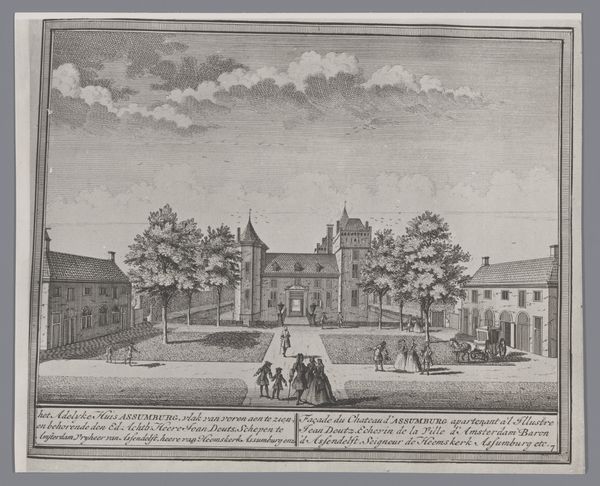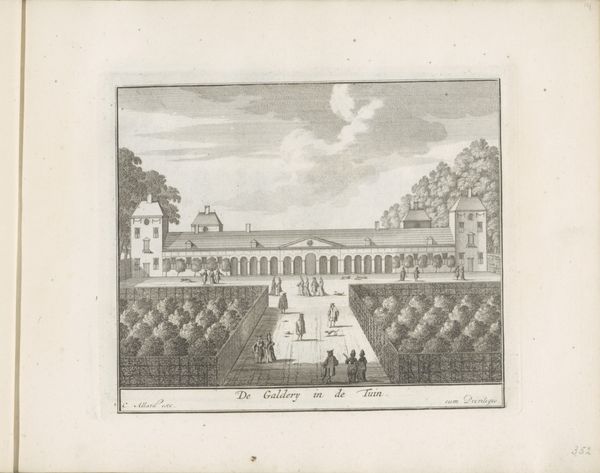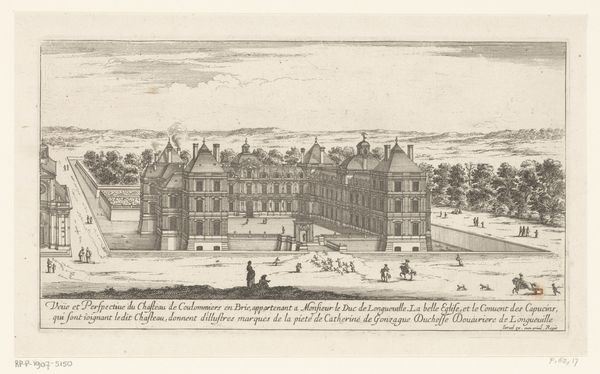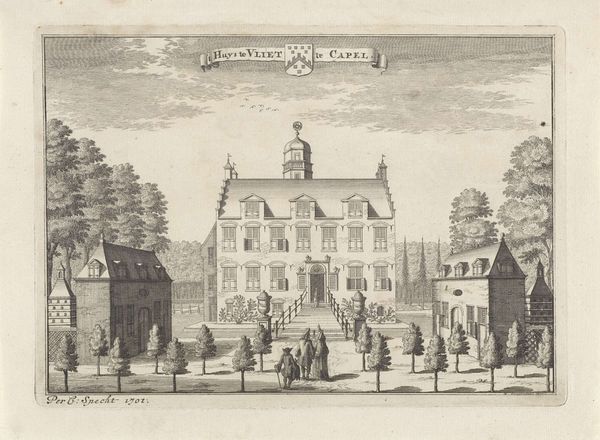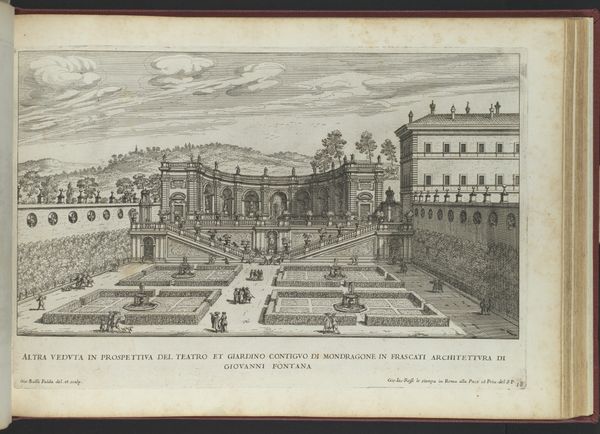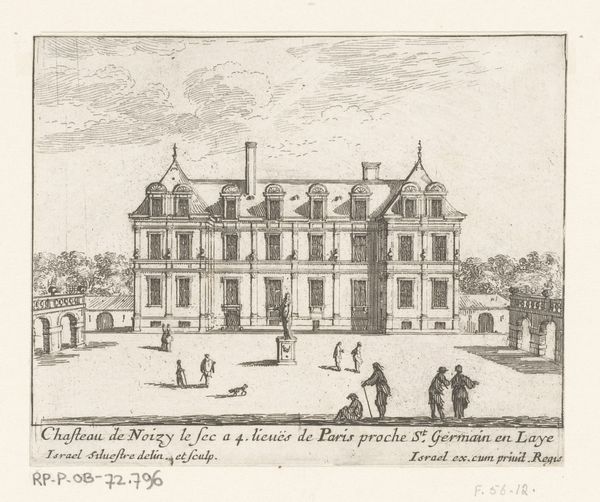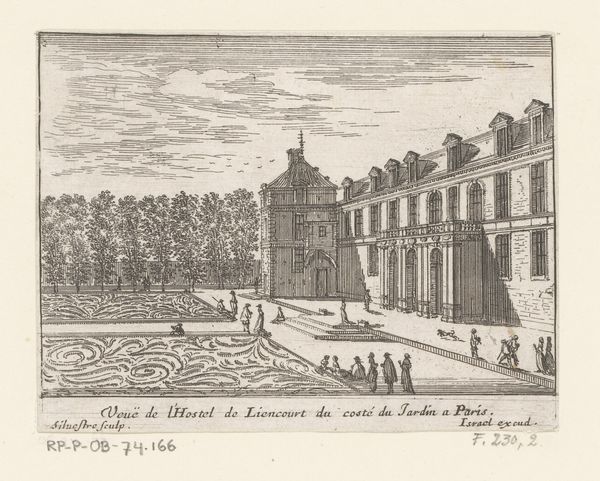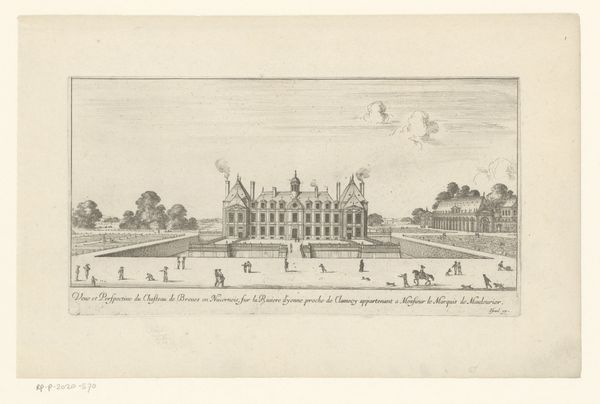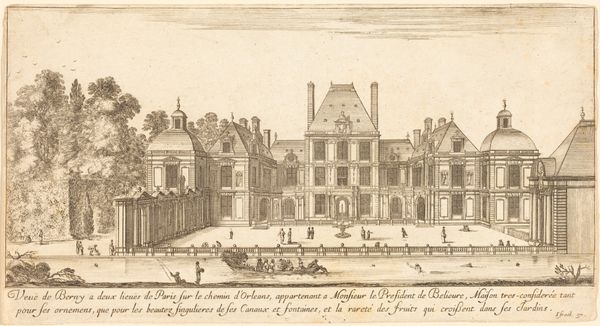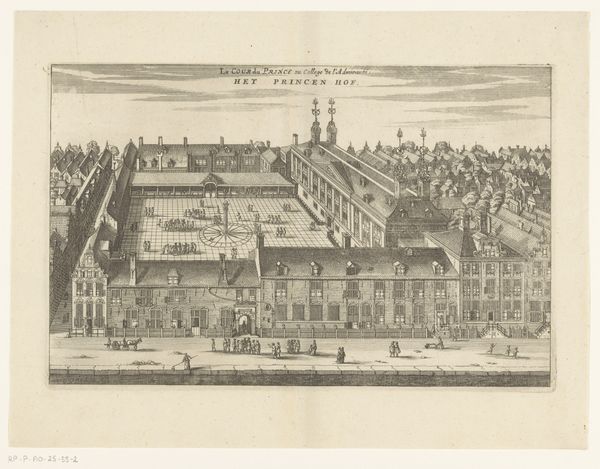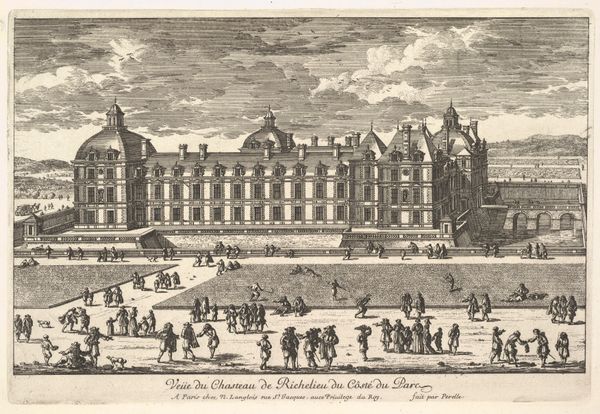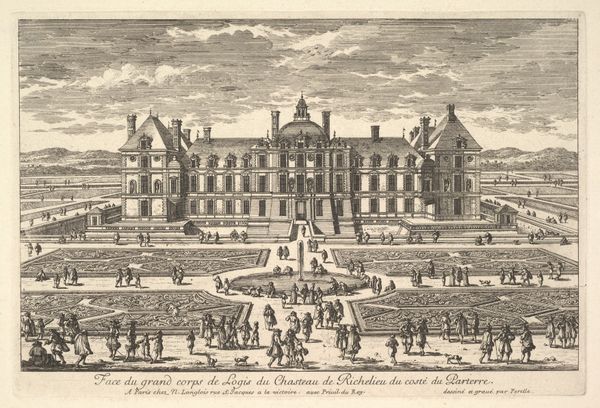
print, engraving, architecture
#
baroque
# print
#
old engraving style
#
landscape
#
cityscape
#
genre-painting
#
engraving
#
architecture
Dimensions: height 284 mm, width 343 mm
Copyright: Rijks Museum: Open Domain
Curator: Looking at this piece, I immediately notice its air of reserved dignity, it's like a stage set ready for a scene from a Jane Austen adaptation. The sharp lines and detail—especially the precision of the landscaping—speak of order and control. Editor: Indeed! We're looking at "View of the Hofje van Wouw in The Hague" by Jan Caspar Philips, made sometime between 1730 and 1736. What intrigues me is how this seemingly tranquil cityscape exists within a larger socio-political narrative. Curator: Tell me more. The hofje itself—what can we learn from its physical existence and representation here? Editor: Well, hofjes like this one served as charitable housing for elderly women, often widows. The engraving provides insights into 18th-century social welfare systems and gendered spaces within Dutch society. How were the lives of these women structured and what resources were allocated to them? Who decided which members of society got these limited resources, and how was it rationed? And more so, is this meant to elicit admiration or pity in its viewers? Curator: A compelling question of intention. But from an artisan's point of view, Philips’s commitment to detail is amazing. I see the way the lines deepen to create shadow, the sheer labor invested. The making is as much a testament to skill and dedication as the site is to the women in it. Editor: Exactly. How does this image support the Dutch golden age? How did art change due to that support, and how might class play a part? The production and dissemination of prints like these speak to an expanding consumer culture, but also the reinforcement of a certain social hierarchy. The consumption of art often reflects privilege and reinforces existing power structures. Curator: And we cannot disregard the labor that Philips engaged in to create that commodity and enter that consumer system himself. Thank you; I will now perceive this work in a new way. Editor: As will I—thinking about its material existence allows us to consider how institutions participate in economic activity that creates access for some and refuses it for others.
Comments
No comments
Be the first to comment and join the conversation on the ultimate creative platform.
